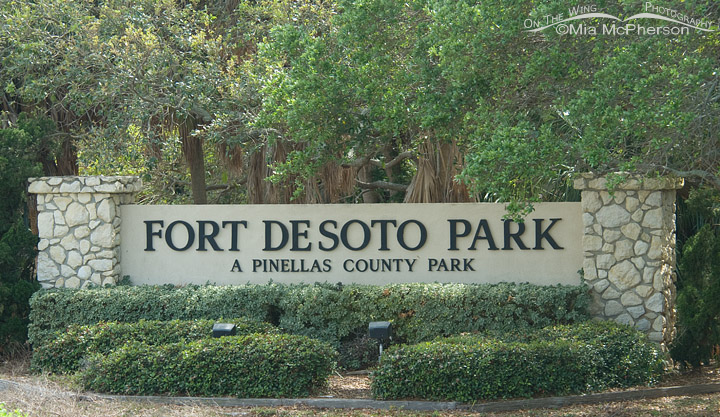 The entrance sign to Fort De Soto – Nikon D200, f6.3, 1/2500, ISO 250, 18-200mm VR at 80mm, natural light.
The entrance sign to Fort De Soto – Nikon D200, f6.3, 1/2500, ISO 250, 18-200mm VR at 80mm, natural light.
I unashamedly admit that I have an ongoing love affair with Fort De Soto County Park in Pinellas County, Florida.
There are a few places I have been to or lived near in my life’s journey that simply feel like “home” to me. Places where I am completely at ease, where I am enthralled by what my eyes drink in, where the smells are familiar and the paths that I take are forever etched into my spirit. Fort De Soto County Park is one of those locations for me.
It is a place where I feel welcomed by the birds & wildlife, where the sand between my toes reminds me of well-worn bedroom slippers and the sound of the waves on the shoreline a lovely melody.
When I lived in Florida near the park and would travel to far off locations across the globe upon my return THE first place I wanted and needed to go was to Fort De Soto to sink my feet in the white sands, to feel the warm water on my skin and watch Reddish Egrets dance like drunken sailors while hunting for prey. I wanted to feel the breeze off the warm Gulf’s waters and bask in the beauty of the surroundings.
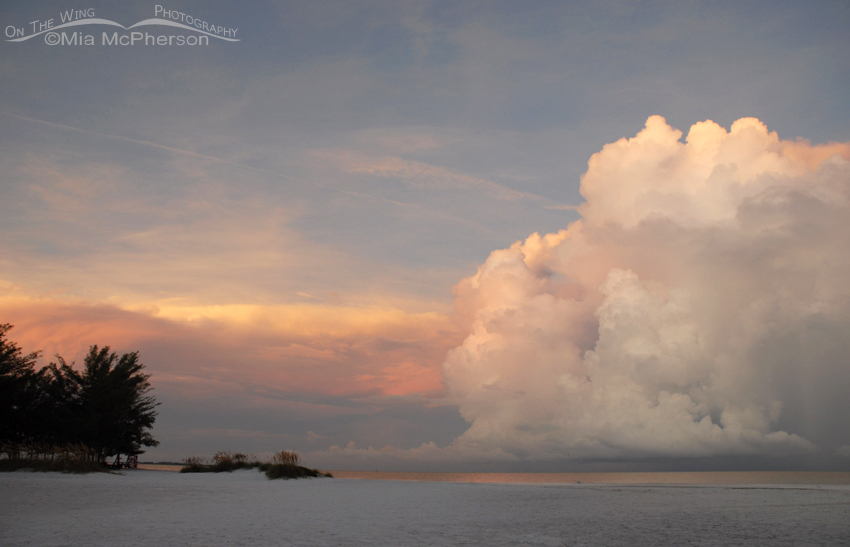 A stormy but colorful sunrise at Fort De Soto’s North Beach – D200, f5.6, 1/400, ISO 200, Nikkor 18-70mm at 18mm, natural light
A stormy but colorful sunrise at Fort De Soto’s North Beach – D200, f5.6, 1/400, ISO 200, Nikkor 18-70mm at 18mm, natural light
Once when I had made a 50 hour trip from Auckland, New Zealand, I was exhausted by traveling and by having very little sleep but I set my alarm for 4:30 a.m. for the next day and before sunrise I was walking on the north beach waiting for the sunrise. I would not have felt at “home” without going to Fort De Soto.
Mornings at Fort De Soto are a delight. Pulling into the north beach parking lot then walking across the small footbridge to the beach. I’d often stop and look to see if any Snowy Egrets, Roseate Spoonbills, White Ibis or Yellow-crowned Night Herons were feeding on either side of the footbridge.
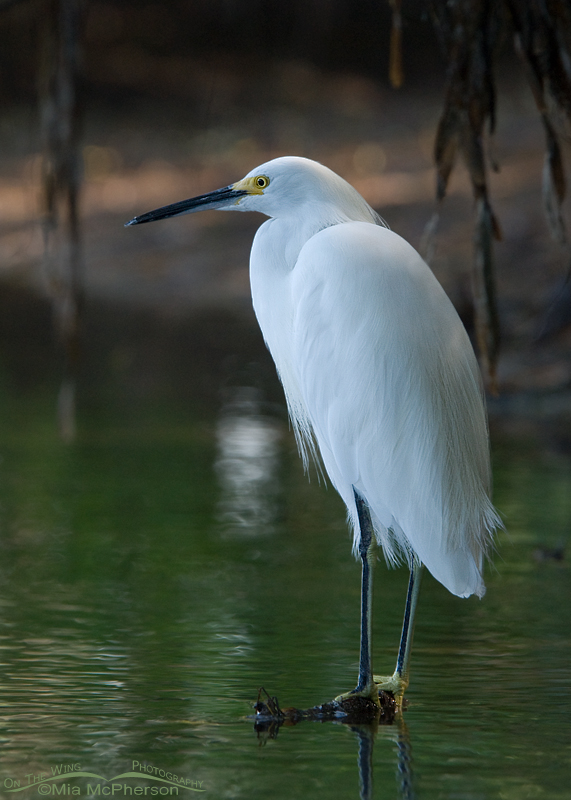 Snowy Egret under the mangroves at the footbridge of North Beach – D200, f6.3, 1/125, ISO 500, 80-400mm VR at 240mm, natural light
Snowy Egret under the mangroves at the footbridge of North Beach – D200, f6.3, 1/125, ISO 500, 80-400mm VR at 240mm, natural light
Walking north in the pre-dawn light I’d come to what I affectionately called “Sunrise Lagoon”, a spot where I have often sat down in the sugar sand to watch the sun light up the sky. All is quiet except for the sound of the water lapping the shore of the lagoon and the occasional squawk of a Great Blue Heron in flight.
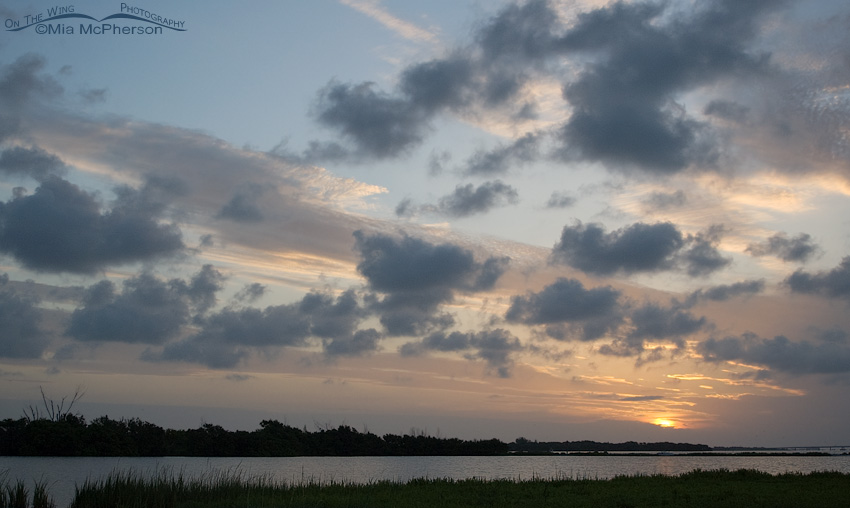 Sunrise over the lagoon – Nikon D70, f4, 1/640, ISO 200, 28-105mm at 28mm, natural light
Sunrise over the lagoon – Nikon D70, f4, 1/640, ISO 200, 28-105mm at 28mm, natural light
On breezy mornings the clouds can scuttle across the sky at rapid speeds and those breezes can cause the Sea Oats to rustle which for me is a very welcoming sound. Layers of different types of clouds appear in all the gorgeous colors of sunrise. Soon, it will be light enough to locate the objects of my passion. The birds of Fort De Soto.

There is a great variety of shore, wading and sea birds to be seen at Fort De Soto. Some of my favorite wading birds year round are the Reddish Egrets, Snowy Egrets, Roseate Spoonbills, Great Egrets and the Tricolored Herons.
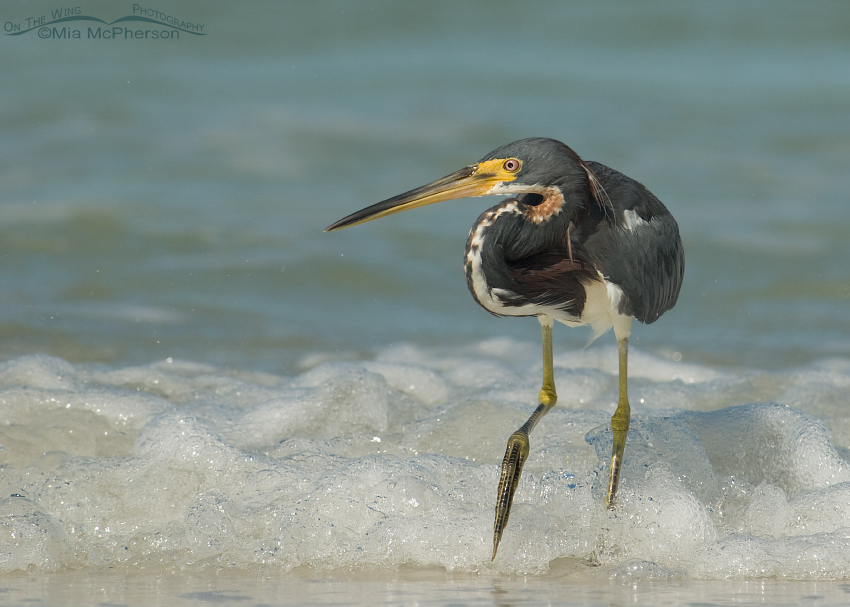 Tricolored Heron hunting in the surf of the Gulf of Mexico – D200, f6.3, 1/1500, ISO 250, 80-400mm VR at 400mm, natural light
Tricolored Heron hunting in the surf of the Gulf of Mexico – D200, f6.3, 1/1500, ISO 250, 80-400mm VR at 400mm, natural light
Fort De Soto is an excellent location for migrating shorebirds and quite often you will see many different species at the same time. American Oystercatchers seem to be year round shorebird residents, I don’t think there is a single month of the year that I didn’t see or photograph them. Seasonally you will see different shorebirds on the beaches, dunes and lagoons, too many species to list here.
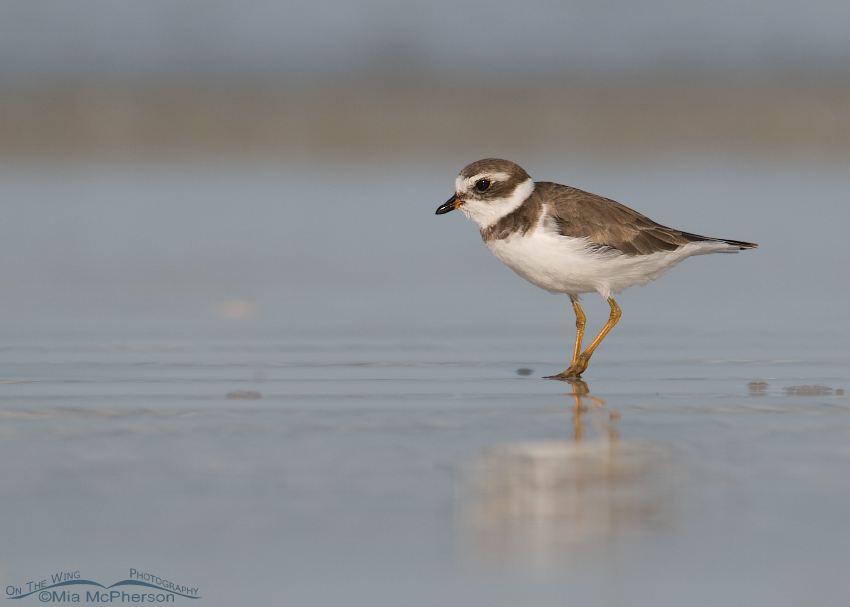 Semipalmated Plover on the shore of the Gulf of Mexico – D200, f6.3, 1/640, ISO 160, 80-400mm VR at 400mm, natural light
Semipalmated Plover on the shore of the Gulf of Mexico – D200, f6.3, 1/640, ISO 160, 80-400mm VR at 400mm, natural light
Throughout the year you will see many species of Gulls and Terns and the unusual but interesting Black Skimmers. The most often seen gull is the Laughing Gull and for terns I believe it is the Royal Tern. Flocks of these gulls, skimmers and terns are beautiful in flight and the calls they make are a delight.
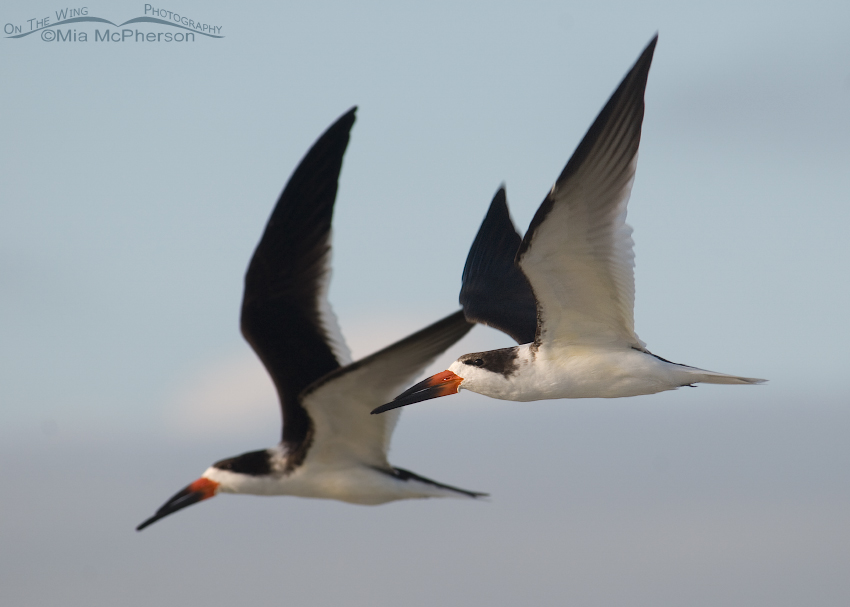 Black Skimmers in flight over Fort De Soto’s North Beach – D200, f6.3, 1/640, ISO 200, 80-400mm VR at 400mm, natural light
Black Skimmers in flight over Fort De Soto’s North Beach – D200, f6.3, 1/640, ISO 200, 80-400mm VR at 400mm, natural light
Another bird you will see year round is the Brown Pelican. They are very entertaining to observe as they skim just inches over the water or when they are feeding seeing them crash dive into the water. There are also Double-crested Cormorants and during some seasons Northern Gannets fly just off the coast. In the winter you can see large groups of American White Pelicans in the lagoons.
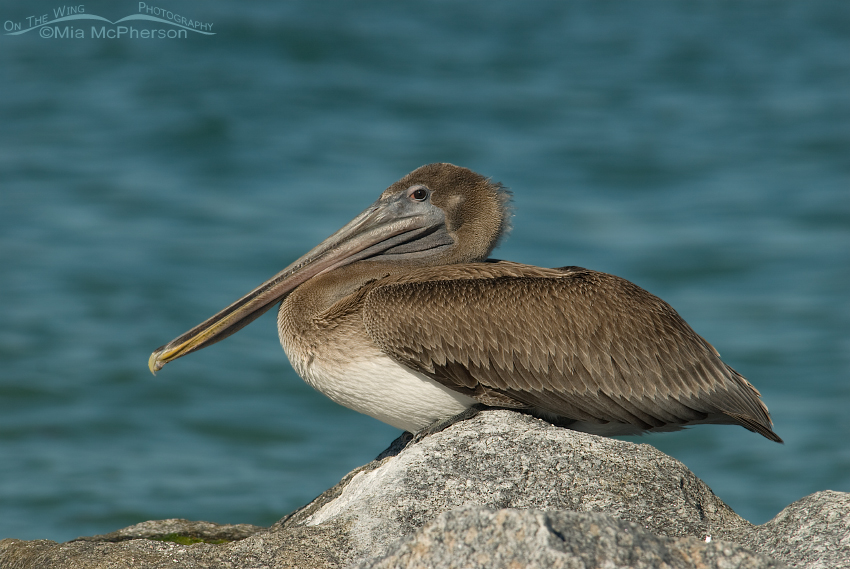 Juvenile Brown Pelican at rest at the Gulf Pier of Fort De Soto – D200, f8, 1/640, ISO 160, 80-400mm at 340mm, natural light
Juvenile Brown Pelican at rest at the Gulf Pier of Fort De Soto – D200, f8, 1/640, ISO 160, 80-400mm at 340mm, natural light
At the North Beach of Fort De Soto the raptor you will see most often is the Osprey which used to be called the “Fish Hawk” and for good reason. Ospreys dive for fish in the lagoons and waters of the Gulf. Their calls are unmistakable.
Peregrine Falcons, Bald Eagles and Northern Harriers show up in the fall and winter and the Red-shouldered Hawks abound near the Arrowhead Trail all year long. Kestrels perch on power lines during the winter and though I wasn’t able to get close enough to them for decent photos seeing them always delighted me. If you are lucky you might also catch sight of the Great-horned Owls at the North Beach.
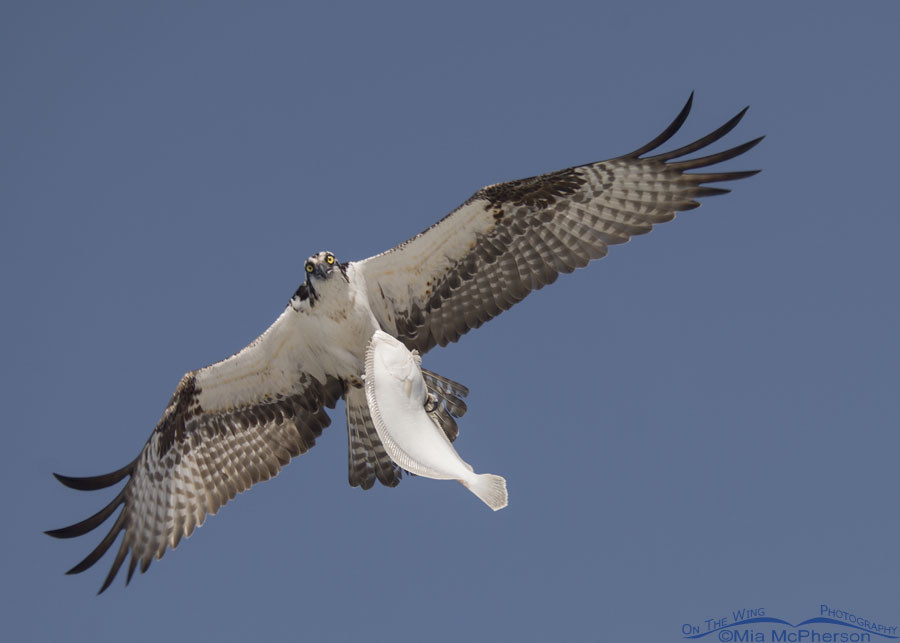 Osprey with flounder over the Gulf – D200, f6.3, 1/750, ISO 160, 80-400mm VR at 116mm, natural light, not baited
Osprey with flounder over the Gulf – D200, f6.3, 1/750, ISO 160, 80-400mm VR at 116mm, natural light, not baited
Fort De Soto is a great migrant trap and many migrating passerines rest and refuel near the park headquarters. Spring time seems to have the most activity. There are too many species to list here.
As I am sure you can tell from all that I have posted above, I love the birds of Fort De Soto. They inspired me to become a better photographer and to learn more about the birds behavior and habitat. They still inspire me.
Fort De Soto also has many animals, Loggerhead Turtles lay their eggs on the beaches, Bottlenose Dolphins cavort in the waters just off shore, Ghost Crabs scurry through the dunes and watch out for Rattlesnakes on Arrowhead Trail. That trail is also where I would also find the most Raccoons.
During the years I walked Fort De Soto’s beaches and trails photographing birds, views and animals I got to know each gentle curve of the dunes even though they changed over time. I can recognize where other people’s images were taken at the park.
Evenings at Fort De Soto can be magical, the light terrific and if you watch very close you might be able to spot the Green Flash that can happen when the sun dips below the horizon. Very magical indeed.
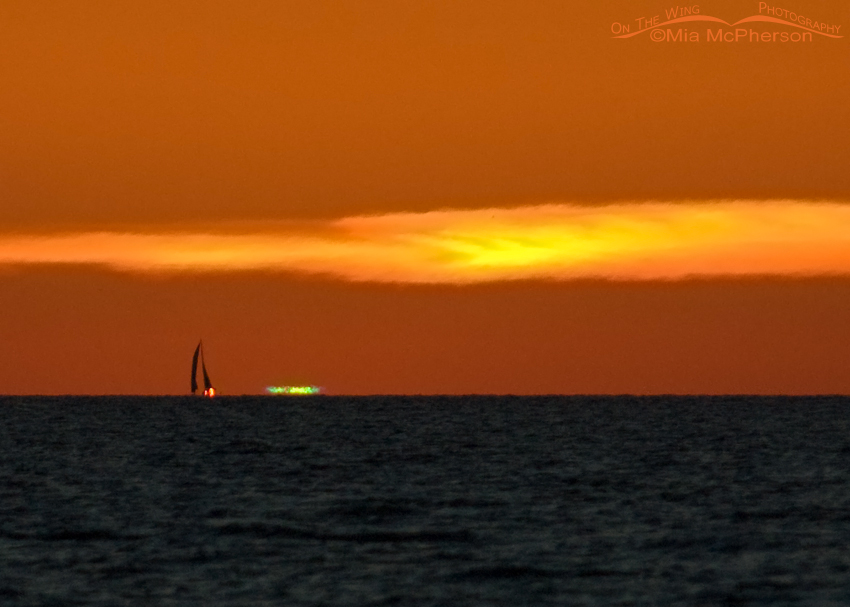 Fort De Soto Green Flash – Nikon D200, f6.3, 1/2500, ISO 500, 80-400mm VR at 400mm, natural light
Fort De Soto Green Flash – Nikon D200, f6.3, 1/2500, ISO 500, 80-400mm VR at 400mm, natural light
Yes, I do have a love affair with Fort De Soto County Park. Even though I live hundreds of miles away from there now, it beckons to me. Should I visit the park again I know I will feel right at “home”.
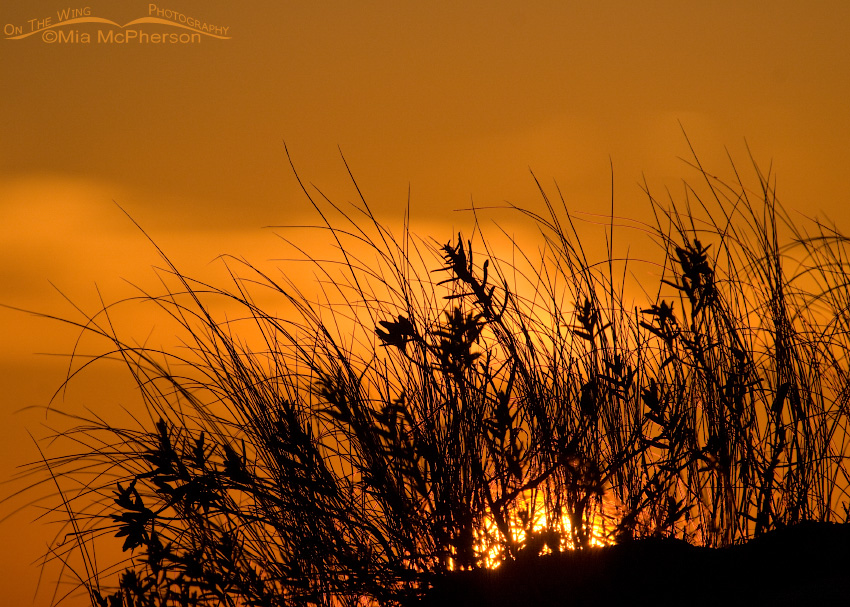 Sunset at Fort De Soto – D200, f6.3, 1/3000, ISO 400, 80-400mm VR at 370mm, natural light
Sunset at Fort De Soto – D200, f6.3, 1/3000, ISO 400, 80-400mm VR at 370mm, natural light
Life is good.
Mia


My favourite place in all of Florida! A beautiful review of the place, Mia. Like you, I feel at home there, like I belong. I am a Brit, you probably know that, as we are Twitter/FB friends. I have taken some of my best photographs there and had some of my most memorable wildlife encounters ever! Tomorrow I am hoping to catch the sunrise there again, and spend the morning wandering aimlessly (mobility scooting, aimlessly to be precise) with my camera in hand, while hubby fishes off the pier. Heaven!
Lisa, by now you are enjoying Fort De Soto and the beauty there. I hope that you are having a marvelous time. I’m with you in spirit.
Hi, Great photos!
Heading to Fort DeSoto tomorrow, any chance there are Burrowing Owls? I have two days left and am torn about which direction to go! Planning Fort deSoto for tomorrow!
Funwithhorses@mac.com is my email!
Hi Wendy, I hope you enjoy your trip to Fort De Soto, I always loved being there. Once in a blue moon a Burrowing Owl may show up at Fort De Soto but you may want to head to Cape Coral for Burrowing Owls there. Try this site for more information.
I have herd of Fort Desoto but have never gone. Your post has inspired me and will be going in the next few days and try to photograph some birds.
Your photos are very beautiful.
Thanks for sharing
David
Looking forward to the day when you come to this area again so we can go exploring. Such fun times!
Exploring or ‘sploring?
I still say ‘sploring
I just found your site while looking for information on Bear River Migratory Refuge. I live just outside of Tampa, Florida and spend a lot of time @ Ft. DeSoto & Circle B. We are headed to Yellowstone in October and always fly into Salt Lake City on our trips west so we can spend time @ Antelope Island. I set time aside this trip for a day @ Bear River as well as Antelope Island. Any suggestions for October @ Bear River. Your photography is wonderful.
Gary, October at Bear River should be good, there will still be some of the shorebirds and some of the northern birds will start showing up around then. The area has been pretty dry so I don’t know how easy it will be to see ducks. Western & Clark’s Grebes will still be around and the weather will be so much cooler then than now! You might also want to check out Farmington Bay Waterfowl Management Area, that is usually pretty busy by October too.
Thanks for you very kind words on my photography!
Good luck when you get here!
Hi Mia. Wonderful photography…really impressive! I have been leading some field trips for my fellow photographers with the Georgia Nature Photographers Association (www.gnpa.org)to the Circle B for the last few years and in planning for next year thought I would add Ft deSoto to the trip. Your photos have convinced me…but to encourage my coleagues to make the drive, I need to find a place to stay that is reaosnable. Do you have any local rcommendations> And thanks again for sharing your love of Ft de Soto through photography.
tom
Hi Tom! Thanks for stopping by my blog and for your comment. I think your colleagues will love Fort De Soto. I think if you do a Google search you will be able to find some reasonably priced hotels close to the Fort.
Photographing at Fort De Soto is always a delight and the birds there are awesome.
Your photography is amazing.
I am a bird lover too and I’ve never been to Fort Desoto but we are driving as I text to Tampa and will visit the North Beach in a few days. Thank you. For your inspiring words about the park and I’d love to know of places where I could buy a piece of your photography. We’ll be in fla till July 13 visiting The Gulf of Mexico.
Thank you Diane, I hope that your trip to Fort De Soto was or is marvelous, it is a very special location!
Please email me about purchasing a print.
Best,
Mia
I want to purchase some of your pictures. Do you sell them?
I am going to be ther the ao March 24, where do you suggest we start?
Thanks
Ted,
Since you do landscape photography I would start off the morning at the east beach turn around, sunrises there can be spectacular especially with the Shy Way Bridge on the horizon. After that I would head to the north beach for birds. If you have time there is a ferry to Egmont Key and it is a great place to photograph. There is a concession stand at Fort De Soto to purchase food & drinks. Arrowhead Trail near the north beach is also wonderful for birds & wildlife. There are Mulberry bushes just south the Park Supervisors house that can also be very birdy.
Enjoy your trip!
Saturday at Largo Nature preserve (pinellas co FL) Saw
Juv little blue heron (white)
Limpkin on a nest that was made by a yellow crowned night heron
Tricolored heron
and of course an Osprey on her nest
Thanks for your comment Dick and for sharing what you are seeing in Florida. As I reply it is snowing rather heavily outside and hearing about Florida made me smile remembering warmer times!
I have one week to shoot over at Fort De Soto
Between now and April 20 —- what do you suggest for the best shooting week ?
Fran,
I would go in April sometime because the migrants are making their way up north.
Thank you so much !!
My pleasure Fran.
We miss you here. No reports of any White-tailed Kites since you’ve left…
best,
Ron
I miss you all too Ron, the fort and the birds. I miss the June Challenge too.
I hope another White-tailed Kite makes an appearance and that you get to see it!
Mia,I found your website and then blog from the NPN website. Great job with both! Wonderful memories of Fort DeSoto that you’ve captured over the years – I’ve only been there a few times (a trip back in january), but think about it a lot. Thanks again for the tips and suggestions before I went on the trip. I’ve lived in some pretty wonderful places, but that short trip to Fort DeSoto will always be remembered.
I’m not sure I’ve ever spoken or written to anyone about Ft. DeSoto, who wasn’t planning their next trip there or already on the way back. it’s a place that just steps into your conciousness and as a fisherman, Birder, photographer or nature lover you know where to go and when to see that which your heart aches to see and makes you whole.
Don,
I hope to see the sugar sand beaches some time soon.
As always your photos inspire me, miss you!
I miss you too Jim! Your smiling face always made me feel welcome
Mia, your description of the park could’ve been written describing me! I love Fort De Soto and go multiple times weekly to volunteer and to photograph the beauty of the park.
Thank you Monice, Fort DeSoto is an amazing place.
I am so excited and humbled by your photos…I feel the same way about Ft Desoto as you do. It’s my favorite place on Earth- so far! I live here and go there with my camera every chance I get. Thank you for sharing your beautiful images.
Laura,
I think Fort Desoto is Florida’s Jewel, it is just gorgeous.
Mia
Wonderful write up on Desoto, really shows your passion for the park.
It was always great to run into you out there on Sunrise Lagoon before dawn.
Steve, it was always wonderful to see you out on the north beach.